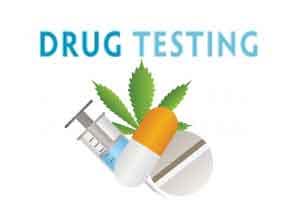- Home
- Editorial
- News
- Practice Guidelines
- Anesthesiology Guidelines
- Cancer Guidelines
- Cardiac Sciences Guidelines
- Critical Care Guidelines
- Dentistry Guidelines
- Dermatology Guidelines
- Diabetes and Endo Guidelines
- Diagnostics Guidelines
- ENT Guidelines
- Featured Practice Guidelines
- Gastroenterology Guidelines
- Geriatrics Guidelines
- Medicine Guidelines
- Nephrology Guidelines
- Neurosciences Guidelines
- Obs and Gynae Guidelines
- Ophthalmology Guidelines
- Orthopaedics Guidelines
- Paediatrics Guidelines
- Psychiatry Guidelines
- Pulmonology Guidelines
- Radiology Guidelines
- Surgery Guidelines
- Urology Guidelines
Now Breath analysis for testing drugs and diseases also

Testing for drug use and disease in humans could soon be much simpler, thanks to new Swedish research.
Whereas drug tests currently rely on blood or urine samples, researchers from the University of Gothenburg have identified a method for drug testing by analyzing various compounds in exhaled breath.
Reporting their results today in the Journal of Breath Research, they demonstrate how collecting and analyzing externally-produced compounds in the lining fluid of the airways allows for non-invasive testing and monitoring.
Lead author Dr Göran Ljungkvist said: "Exhaled breath contains particles carrying non-volatile substances. The main components, lipids, and proteins are derived from the respiratory tract lining fluid. The collection procedure is non-invasive, can be repeated within a short time span and is convenient. The small mass sampled is, however, an analytical challenge. Nevertheless, exhaled particles are a new and promising matrix for the analysis of biomarkers.
"We took breath samples from 13 subjects who were undergoing methadone management, to explore whether traces of the drug could be detected via their breath, rather than using invasive techniques that disturb the integrity of the subject.
"We also wanted to discover the best method for collecting methadone particles in the exhaled breath, so our study compared two different sampling methods - electret filtration, and impaction."
The electret filtration method potentially collected exhaled particles of all sizes, while the one based on impaction collected particles in the size range of 0.5 to 7μm, known to reflect respiratory tract lining fluid from the small airways.
The researchers used liquid chromatography-mass spectrometry to analyze the collected samples, as well as investigating the impact of different breathing patterns.
Their results showed methadone was present in all samples using both methods, but when using the method based on impaction, the concentration of methadone in exhaled breath was less than one percent of the concentration collected by the method based on filtration.
Dr Ljungkvist said: "The difference in collected amounts of methadone between the two methods was, however, huge. That raised secondary questions on the origin of the collected particles, possible contamination from the oral fluid, the breathing pattern and finally the design of the collection device.
"The design of the device is crucial in many ways and it is likely that the huge difference in collected amounts is explained by the sampling of different particle size distributions. The device based on filtration also collects larger particles not collected by the method based on impaction. The design also influences the risk of contamination from oral fluid and losses of particles on their way to the actual collecting medium.
"However, we believe the very high amount of methadone collected by the filtration method is probably due to a considerable contribution of methadone from the central airways or oropharyngeal tract.
"Our results and methods could have implications for the analysis of endogenous and exogeneous compounds in the exhaled breath as biomarkers of systemic and lung diseases, as well as in the development of new approaches to study human exposure to airborne contamination."
For more details click on the link: http://dx.doi.org/10.1088/1752-7163/aa8b25

Disclaimer: This site is primarily intended for healthcare professionals. Any content/information on this website does not replace the advice of medical and/or health professionals and should not be construed as medical/diagnostic advice/endorsement or prescription. Use of this site is subject to our terms of use, privacy policy, advertisement policy. © 2020 Minerva Medical Treatment Pvt Ltd